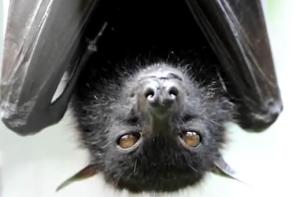During the Spring of 2014, Philippines health officials received reports of deaths from two villages in Sultan Kudarat, Mindanao in the southern Philippines. In addition to several human deaths, the Philippine National Epidemiology Center discovered in their investigation several horses that died, which were then consumed by the villagers.

Image/Video Screen Shot
The study by Philippines, Australian and US experts published “ahead of print” in the journal, Emerging Infectious Diseases, conclude the cause of the outbreak was due to henipavirus infection, most likely Nipah virus NiV.
The case definition for the infection was anyone with contact with the city, and who had experienced acute encephalitis syndrome, severe influenza-like illness (ILI), or meningitis during March 3–May 24, 2014. From this, 17 people met the case definition, mostly with acute encephalitis syndrome. Nine people died from the illness.
15 of the patients either participated in horse slaughtering and horse meat consumption, only consumed horse meat or were exposed to other human case-patients but not to any horses.
In addition to a number of horse deaths, researchers report some domestic animals died after consuming the horse meat.
Two labs, the Australian Animal Health Laboratory and the National Institute of Infectious Diseases (Japan), conducted testing on a wide range of pathogens. Only henipaviruses could not be ruled out.
Henipaviruses represent an novel genus in the Paramyxovirus family: Hendra virus first emerged emerged in 1994 in Brisbane, Brisbane, Queensland, as a severe acute respiratory disease of race horses and humans, with a high case fatality rate. Some cases were later shown to be neurological.
Nipah virus emerged in Malaysia in 1999 as a severe disease of pigs and humans with both respiratory and neurological syndromes and also with a high fatality rate.
Since 2001, a number of outbreaks of Nipah virus infection have occurred in Bangladesh and India’s West Bengal.
The natural reservoirs of both viruses are fruit bats (flying foxes) in the family Pteropididae and genus Pteropus.
Researchers conclude based on clinical presentations, epidemiologic findings, and serologic results that the virus causing this outbreak was a henipavirus. It was most likely NiV or a virus that is antigenically and genetically closely related to NiV.
The primary route of exposure was through direct exposure to infected horses, contact with contaminated body fluids during slaughtering of sick horses, and/or consumption of undercooked meat from infected horses. However, for at least 5 cases, clinical and epidemiologic evidence suggest direct human-to-human virus transmission.


One thought on “Possible Nipah virus outbreak in the southern Philippines- Spring 2014”